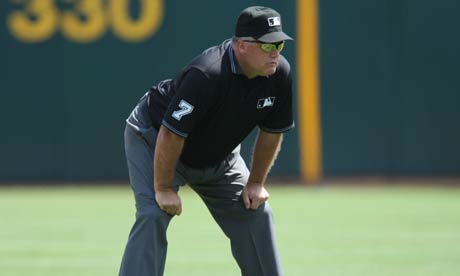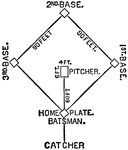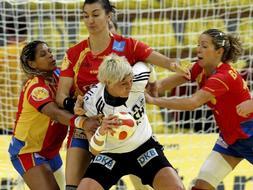
It is a game played with a hard ball and bat, between two teams of nine players each.
Baseball is the national game of theUnited States, because it is the most popular sport there. It is played by people of all ages.
The team that scores the most runs (when a batter goes through the bases and home) wins the game.
The pitcher in the defender team throws the ball towards the batter, a player on the attacking team.

The batter tries to hit the ball into the field. If he hits the ball he then runs around the bases.

The defenders in the field try to put him out.
Batters and runners can be put out in many ways.
The catcher tries to catch the ball thrown by the pitcher when the batter doesn´t want to hit the ball or can´t hit it.

The umpire decides if the ball thrown by the pitcher went through the right zone (over the base and in between the knees and shoulders of the batter).
THE FIELD

Here you can watch an interesting video about baseball










